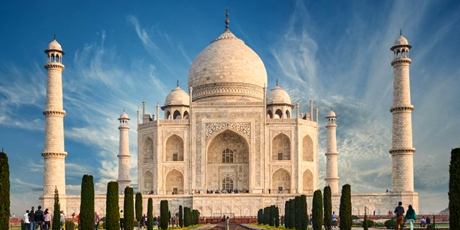


Taj Mahal
Taj Mahal
The Taj Mahal stands out as the best example of Indo-Islamic architecture. A symbol of timeless love, the monument took approximately 16 years to build, with additions to the monument a few years later. It is estimated that about 20,000 workers helped with the construction! The Taj Mahal was built out of white marble, giving it a pristine appearance like no other monument has ever known. Today, the Taj Mahal is a symbol of love for many lovers from around the world - and it’s not difficult to guess why. The construction of a majestic structure, just to honour his beloved wife after her death, has ensured that their love will never sink into oblivion. Today, the remains of both, the king and the queen, are enshrined in the Taj Mahal. |
|
The tomb also depicts the emperor’s keen attention to detail, and lust for perfection; which is also evidenced in how the monument was created. White marble was mined in Rajasthan, red sandstone in Delhi, and precious stones were brought in from different corners of the world - there are about 40 different types of gems, sourced from places like Tibet, Baghdad and Turkistan, which have been used to adorn the architecture.
Shah Jahan was not only closely involved in the entire construction of his ode to his beloved but had also employed workers talented in different fields, from different parts of the continent. In fact, he even ensured the creation of a town, named Mumtazabad, to house the 20,000 labourers that partook int the construction of the monument.
There are a whole lot of innovative things about the Taj Mahal, and one of them is distinctly visible in the way the structure was planned. Planned and created by some of the most talented architects, artisans and horticulturists, the building was constructed such that instead of the structure being surrounded by gardens, there are gardens leading up to the structure - providing fantastical depth when you look at the monument from a distance.
Also as astounding as the exteriors of the structure are, so too are the interiors; with intricately designed walls and archways, serving as the best depiction of Mughal architecture.
